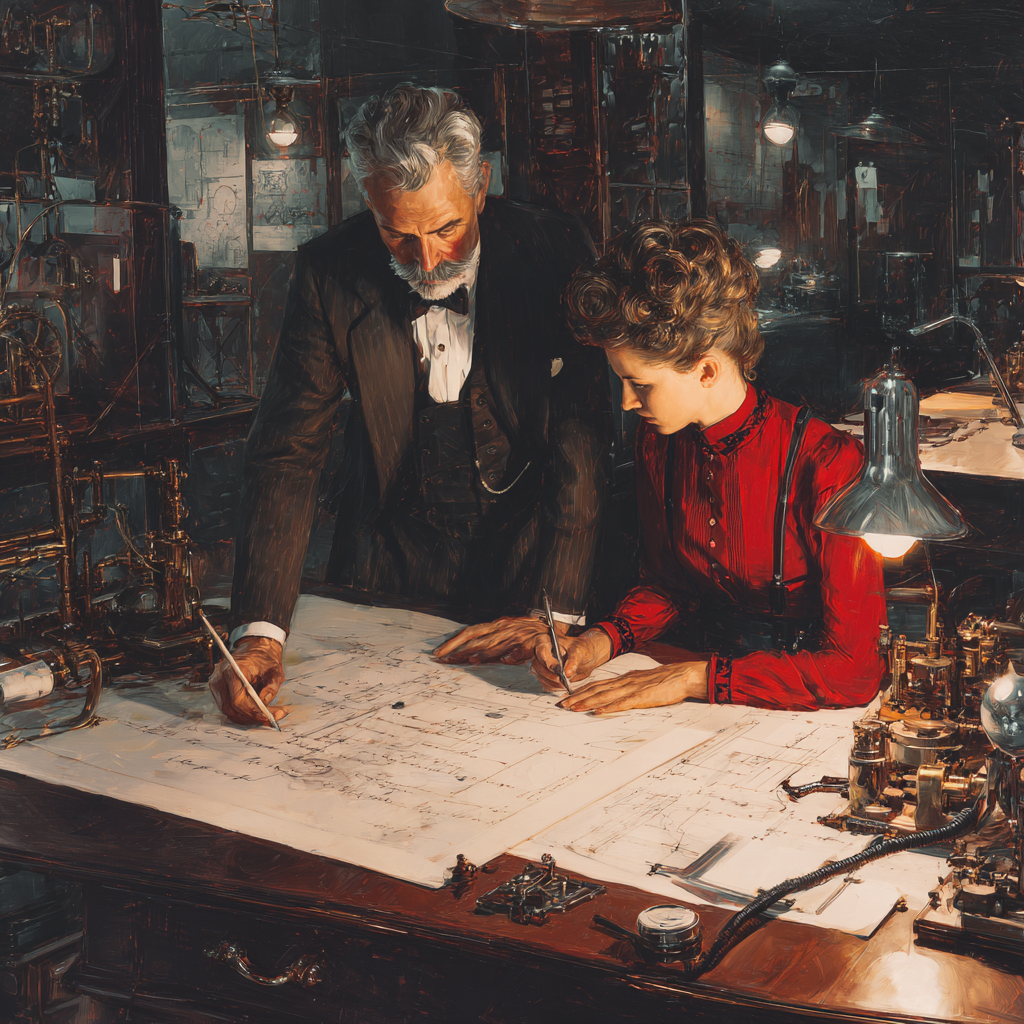Turning Ideas Into Income: How Inventors Can Attract Investors and License Products

If you’re an inventor, chances are you’ve heard some version of this question:
“So how are you going to make money from it?”
It’s a fair question—and one that separates casual tinkerers from serious product developers. As a registered U.S. patent agent, I’ve seen brilliant ideas die on the vine for one reason: the inventor didn’t know how to translate their idea into income.
This article is your roadmap to doing just that.
We’ll cover two of the most common pathways to monetization:
- Attracting early-stage investors, and
- Licensing your product for royalties.
You’ll learn how to build what investors care about, how licensing actually works, and what mistakes to avoid along the way.
Step 1: Start With the Right Mindset
Many inventors think the patent is the end goal. It’s not. A patent is a tool—leverage, not a lottery ticket. Turning your idea into income takes a mix of legal strategy, business development, and storytelling.
You don’t need to be a business expert—but you do need to think like one.
“No investor is buying your patent. They’re buying the story, the strategy, and the potential return,” I tell clients regularly.
Before you look for investors or licensees, make sure you can answer:
- What problem does your invention solve?
- Who are the customers, and how many of them are there?
- How is it better than current solutions?
- Can you protect it legally?
Once you know the answers, you’re ready to talk money.
Step 2: Attracting Early-Stage Investors
When inventors think about funding, they often jump to Shark Tank or venture capital. But most ideas don’t start there—they start with angel investors, friends and family, or strategic partners.
So what are early investors really looking for?
What Investors Care About
- A Marketable Product: Not just a cool invention, but something people want and will pay for.
- Proof of Progress: A working prototype, a patent filing, some traction—even just customer interest.
- Clear IP Ownership: Investors want to see that your invention is protected, either by a patent or a strong provisional filing.
- A Credible Story: You don’t need a full business plan, but you should have a compelling pitch deck that explains the who, what, why, and how.
They’re not just betting on your product—they’re betting on you.
How to Prepare
- File a provisional patent application if you haven’t already. It shows seriousness and preserves your rights.
- Create a prototype, even a basic one.
- Develop a one-page executive summary or pitch deck outlining your opportunity.
- Be realistic about valuation and timeline. Investors expect risk—but they want to know you’ve thought it through.

Step 3: Understanding Licensing—The Inventor’s Business Model
Licensing is how most inventors actually make money. Instead of building a company, you license your invention to a manufacturer or brand that takes over production, marketing, and distribution—while you collect royalties.
Think of it as renting your invention instead of selling it outright.
How Licensing Works
Here’s how a typical licensing deal works:
- You (the licensor) own the patent or IP rights
- A company (the licensee) agrees to manufacture, market, and sell the product
- In return, you get paid royalties—a percentage of gross or net sales
- Sometimes there’s also an upfront fee or milestone payments for development stages
Example:
You license your patented pet grooming tool to a major pet brand. They sell 100,000 units at $20 each. Your royalty rate is 5%.
You earn:
100,000 × $20 × 5% = $100,000 in royalties
Step 4: What Makes a Product “Licensable”?
Not every idea is license-ready. Here’s what companies look for when evaluating inventions:
- Patent Protection
Companies want exclusive rights. If your invention isn’t protected—or is easy to copy—it’s not worth licensing. A filed provisional, pending utility, or issued patent is crucial. - Clear Market Potential
Can it sell? Is there proven demand? A product that solves a real problem for a known audience gets attention. - Production Feasibility
If it’s too expensive, fragile, or difficult to make at scale, companies may walk away. Even a great idea needs practical execution. - Visual Appeal or Differentiation
Especially for consumer goods, a unique look can justify a design patent or higher shelf appeal. - A Professional Pitch Package
Include a 1-page summary, your patent status, basic drawings or renderings, and possibly a short video showing the product in use.
“Licensing is about reducing friction,” I remind clients. “The easier you make it for a company to say yes—to see the vision and take it to market—the better your odds.”

Step 5: Negotiating Licensing Terms
So you’ve caught a company’s attention—now comes the deal.
Key Terms to Understand:
- Royalty Rate: Typically ranges from 3–10% of wholesale revenue, depending on industry and leverage.
- Minimum Guarantees: Annual sales thresholds the licensee must meet—or the license can be terminated.
- Exclusivity: Most licensees want exclusivity in certain markets or regions. Make sure there’s a reversion clause if they underperform.
- Term Length: Often 3–7 years, with renewals.
- Upfront Payments: Not always included, but negotiable as a show of commitment.
Make sure you have a qualified licensing attorney or agent review the deal. Licensing contracts can be complex—and mistakes here cost real money.
Step 6: Balancing Licensing vs. Starting a Business
Inventors often ask: “Should I license it or start a company myself?”
Here’s how I break it down:
| Factor | License | Start a Company |
|---|---|---|
| Time Investment | Low | High |
| Financial Risk | Low | High |
| Control | Low (you defer to licensee) | High |
| Income Potential | Moderate | High (if successful) |
| Speed to Market | Faster | Slower (due to setup time) |
If you enjoy inventing more than running a business—and don’t want to manage manufacturing, inventory, and marketing—licensing is often the smarter path.
Mistakes to Avoid
Here are the most common missteps I see:
- Pitching without IP protection
Always file a provisional or have an NDA in place before disclosing specifics. - Overvaluing the idea
Remember: companies are taking on the risk and investment. Be fair and realistic. - Failing to follow up
Licensing is often a relationship game. You may get a “no” today that turns into a “yes” next quarter. - Not understanding the fine print
A licensing agreement is a legal contract. Get help reviewing royalty language, terminations, and obligations.
Real-World Success Story
One of my clients—a solo inventor—developed a tool for easily removing screen protectors from smartphones. He built a simple prototype, filed a strong provisional with my help, and created a short demo video.
Instead of starting a company, he pitched it to accessory brands at a trade show. One of them bit. A licensing deal followed—with a 6% royalty, a modest upfront payment, and retail placement in 600 stores within a year.
No warehouse. No shipping. Just idea → patent → prototype → license → income.
Final Thoughts from a Patent Agent
There’s never been a better time to be an inventor. Open innovation, global manufacturing, and e-commerce platforms have made it easier than ever to turn ideas into income—if you play it smart.
Start with solid IP protection, build a prototype, and package your idea in a way that speaks the language of investors and licensees. You don’t need millions in funding or a factory to succeed. But you do need to think strategically and protect yourself.
If you’re not sure where to begin—whether it’s filing a patent, developing a pitch deck, or approaching licensing prospects—talk to someone who knows the terrain.
“Ideas are cheap. Execution is hard. But protection is what makes execution profitable.”

I’m a registered U.S. Patent Agent with years of experience helping inventors protect, pitch, and license their ideas. If you're serious about turning your invention into income, let’s talk about the best strategy for you.